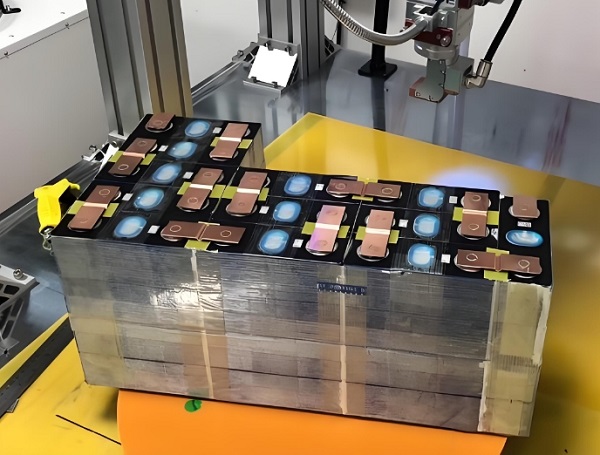Optimization of Welding Process Parameters for Lithium Battery Laser Welding Machine
In the production of lithium batteries, the role of lithium battery laser welding machines is becoming increasingly important. However, if the welding process parameters are not adjusted properly, the welding quality cannot be guaranteed. Laser power, welding speed, pulse width, defocus, and other parameters have a significant impact on the welding effect. To do a good job in lithium battery welding, these parameters need to be optimized in place. Below, let me explain in detail how to do it.

Laser power: precise control of heat input
Laser power is a crucial parameter in welding processes. If the power is too high, the heat absorbed at the weld seam is too much, which can easily lead to defects such as burning through and porosity, and also cause severe deformation of the lithium battery casing, affecting the internal structure. If the power is too low, it will lead to weak welding and insufficient weld strength.
For example, when welding thinner lithium battery electrode sheets, we set the laser power of the lithium battery laser welding machine to a relatively low range, about 1000-1500W, which can ensure effective welding of the electrode sheets without damage due to overheating. And welding a slightly thicker lithium battery casing may increase the power to 2000-6000W.
Welding speed: Balancing heat distribution and efficiency
The welding speed also has a significant impact on the welding quality. The speed of the lithium battery laser welding machine is too slow, and a large amount of heat accumulates locally, which can easily cause excessive melting of the material and increase the risk of deformation. The speed is too fast, and the laser energy cannot be fully absorbed by the material, resulting in virtual welding and incomplete penetration of the weld seam.
Pulse width: precise control of energy release
The pulse width determines the duration of the laser pulse acting on the material. The appropriate pulse width can ensure that the heat release during each welding is just right. For lithium battery welding, narrow pulse width is very useful when welding high reflectivity metal materials, such as welding copper electrodes. Narrow pulse width can reduce reflection, allowing laser energy to be better absorbed by the material and improving welding quality. Generally speaking, the pulse width for welding delicate parts such as lithium battery electrodes can be set between 0.5-2 milliseconds.
Defocus distance: ensuring welding stability
The defocus amount refers to the relative position between the laser focus and the surface of the workpiece. Positive defocusing can enlarge the light spot and reduce energy density, making it suitable for lithium battery laser welding machines to weld thinner materials and avoid burning through. Negative defocusing reduces the spot size and increases the energy density, making it suitable for welding thick materials. In lithium battery welding, we need to accurately adjust the defocus amount for materials of different thicknesses.
The optimization of welding process parameters for lithium battery laser welding machine is a comprehensive consideration and repeated testing process. Only by adjusting parameters such as laser power, welding speed, pulse width, and defocus to the appropriate state can we ensure the welding quality of lithium batteries, improve product performance and production efficiency, and meet the growing market demand.
Recent Posts
- What are the advantages of laser welding machines in lithium battery pack production lines?
- What issues should be noted when choosing a lithium battery pack production line?
- Quality Inspection and Control of Lithium Battery Module Pack Production Line
- Cell grouping and sorting process in lithium battery module pack production line
- What are the safety hazards of lithium battery pack production lines and how can they be prevented?
INQUIRY

